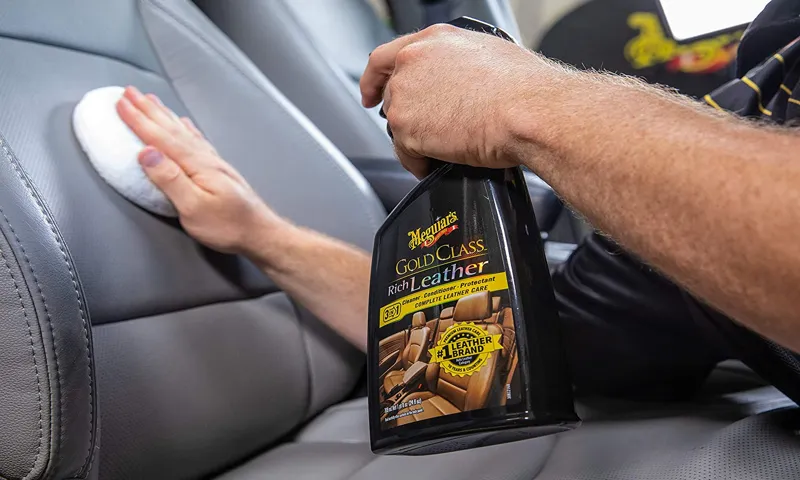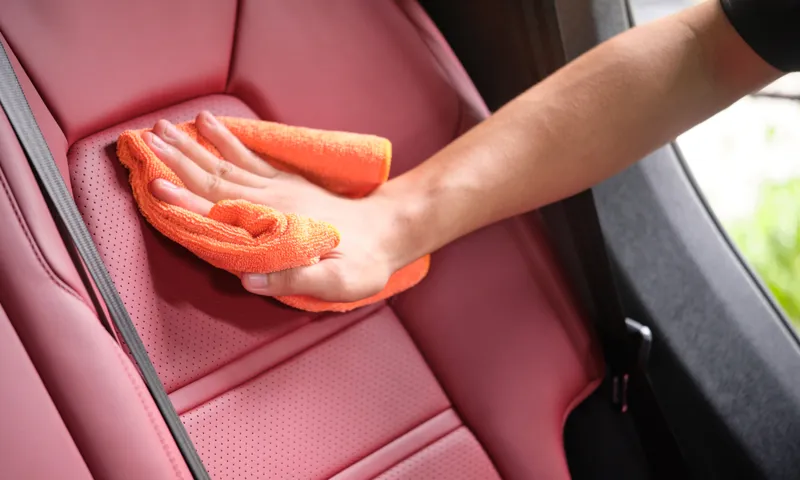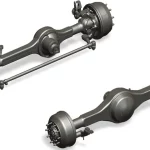Leather seats are a luxurious and stylish addition to any vehicle. They exude a sophisticated charm that can add value to your car. However, these seats require diligent and regular maintenance to preserve their beauty and comfort.
Taking care of leather seats can be a challenge, but with the right tips and tricks, it can be a breeze. In this blog post, we will discuss the best ways to care for and maintain your leather seats, so they last for years to come. From preventing cracks to cleaning up stains, we’ve got you covered with simple yet effective tips that will keep your leather seats looking as good as new.
So, put on your gloves and let’s dive right in!
Table of Contents
Understanding the Material
If you’re looking for ways on how to care for leather seats, you’ve come to the right place. It’s important to understand that leather is a natural material with its own unique characteristics and needs. To start, be sure to clean any spills or stains right away to avoid any potential damage to the surface.
Use a soft cloth or sponge and a leather-specific cleaning solution to gently remove any dirt or debris. It’s also important to keep the leather moisturized using a leather conditioner to prevent cracking or fading over time. Avoid leaving your car in direct sunlight for long periods as this can also cause damage to the leather.
Remember, treating your leather seats with care and attention will ensure that they stay in tip-top shape for years to come.
Leather vs. Faux Leather
When it comes to choosing between leather and faux leather, it’s important to understand the differences between the two materials. Leather is a natural material made from animal hides, while faux leather is a synthetic material that mimics the look and feel of real leather. While leather has a reputation for being durable and long-lasting, it’s also more expensive and can require more maintenance.
On the other hand, faux leather is typically less expensive and easier to maintain, but may not be as durable in the long run. Ultimately, the decision between leather and faux leather often comes down to personal preference and budget. However, it’s important to note that both materials have their own unique advantages and disadvantages, and it’s important to carefully consider your options before making a decision.

Types of Leather and Their Characteristics
When shopping for leather products, it’s essential to know the different types of leather available and their characteristics. Full-grain leather is considered the highest quality, as it comes from the top layer of the hide and retains its natural texture and imperfections. Top-grain leather is another popular choice and is sanded and buffed to remove imperfections, resulting in a smoother finish.
Genuine leather is made from the lower layers of the hide, making it less durable and of lower quality. Bonded leather is a man-made material consisting of genuine leather scraps bonded together with adhesives and coated to resemble full-grain leather. By understanding the types of leather available and their characteristics, you can make an informed decision when selecting a leather product that meets your needs and expectations.
Common Leather Seat Problems to Watch Out For
When it comes to leather seats, it’s essential to understand the material’s characteristics to avoid common problems down the line. Leather seats are known for their elegance, durability, and overall comfort. However, with constant exposure to sunlight, heat, and moisture, these seats can start to crack, fade, or discolor over time.
It’s important to keep them clean and well-maintained to prevent these issues. Additionally, leather seats are prone to scratches, tears, and general wear and tear, especially in high-traffic areas. Thus, regular cleaning, conditioning, and protection are necessary to keep them looking new for longer and protect them against further damage.
By understanding the nature of the material, we can prevent and fix common leather seat problems effectively.
Cleaning and Maintenance
Leather seats are a luxury addition to any vehicle and with the right care and maintenance, they can last for years. To care for leather seats, start by vacuuming or wiping away any debris or dirt. This will prevent the dirt from being pressed into the leather and potentially damaging it.
Next, use a cleaning solution specifically made for leather seats. Avoid using products with harsh chemicals that could dry out the leather or cause discoloration. Apply the cleaner with a microfiber cloth, gently rubbing the solution in a circular motion over the seats.
Finally, let the seats air dry or use a clean, dry cloth to wipe away any excess cleaning solution. To maintain the leather, use a leather conditioner every few months to keep it soft and supple. You can also apply a UV protectant to prevent any discoloration or fading from sun exposure.
With a little regular care, your leather seats will continue to look and feel luxurious for years to come.
Tools You Need for Leather Seat Cleaning
Maintaining leather seats is crucial in prolonging their life span and ensuring their pristine appearance. As such, you’ll need a few essential tools for leather seat cleaning. First off, you’ll need a leather cleaner suitable for your car’s seats.
Leather cleaners come in either spray or liquid form, and you should choose one that is pH-balanced and can get rid of dirt and grime without drying out the leather. A leather conditioner is also essential to keep the leather supple and prevent it from cracking. A soft-bristled brush is necessary for gently scrubbing the leather surface without damaging it.
You’ll also need a microfiber cloth for wiping off the cleaner and conditioning agent. Lastly, always remember to protect your leather seats with a waterproof sealant to prevent discoloration and water damage. By using these tools, you can maintain the beauty of your car’s leather seats and keep them looking like new for years to come.
Regular Cleaning and Maintenance Routine
Regular cleaning and maintenance of your household appliances is an essential routine that should not be ignored. Dust, dirt, and grime can accumulate on your appliances, leading to poor functionality and a shorter lifespan. One way to prevent this from happening is by developing a cleaning and maintenance routine that fits your lifestyle.
For instance, you can easily wipe down your dishwasher and oven once a week to keep them clean and functioning optimally. Regular inspection of your appliances can also help identify any worn out or broken parts that need replacement or repair. By keeping up with regular cleaning and maintenance, you not only extend the lifespan of your appliances, but you also save money on costly repairs or replacements.
Remember, prevention is always better than cure, and a little effort in maintaining your appliances can go a long way in keeping your household running smoothly.
Stain Removal Techniques for Tough Spots
Stains can be pesky to remove, especially if they are tough spots. But don’t worry, there are various stain removal techniques that you can use to combat them. First of all, it’s essential to identify the stain type and tackle it accordingly.
For instance, if you are dealing with a food stain, start by scraping off any excess residue before applying a stain remover solution. On the other hand, ink stains require a different approach, such as saturating the stain with rubbing alcohol or hairspray. Another common tough spot is red wine stains, which can be eliminated by blotting up as much wine as possible, applying salt or baking soda to absorb the excess wine, and then using a mixture of white vinegar and dish soap to lift off the remainder.
Overall, when it comes to stain removal, patience is key – give the cleaning solution enough time to soak into the stain before attempting to clean it off. With the right techniques and a bit of elbow grease, you can say goodbye to tough spots for good!
Protecting Your Leather Seats from Damage
If you want to protect your leather seats from damage, it’s essential to keep them clean and well-maintained. Use a leather-specific cleaner and conditioner to keep the leather supple and prevent it from cracking or drying out. Regularly wiping down the seats with a damp cloth or vacuuming dirt and debris is also crucial to maintaining the leather’s integrity.
It’s essential to avoid using harsh chemicals or abrasive materials that could damage the leather, such as ammonia-based cleaners or scrub brushes. Instead, use a soft-bristled brush or microfiber cloth to gently buff out stains or spills. By maintaining your leather seats, you can extend their lifespan and keep them looking great for years to come.
Tips for Long-Term Preservation
If you want your leather car seats to last for many years, you need to take good care of them. One of the best ways to do this is to keep them clean and hydrated. You can achieve this by wiping down your seats with a gentle leather cleaner and conditioner at least once a month.
Avoid using harsh chemicals or abrasives, as they can damage the leather. Also, try to avoid exposing your seats to direct sunlight or extreme temperatures, as this can cause the leather to crack and fade. If you do need to park your car in the sun for an extended period, consider using a sunshade or covering your seats with a towel or sheet.
Additionally, be mindful of what you bring into your car, as spills and stains can be difficult to remove from leather. With proper care, your leather car seats will look beautiful and feel comfortable for years to come.
Storing Your Vehicle Properly
Storing your vehicle properly is essential to ensure its longevity and performance in the long run. Here are a few tips that can help you preserve your vehicle for an extended period. Firstly, clean your vehicle thoroughly, both from inside and outside, to prevent any rust or microbial growth.
Additionally, change all the fluids to prevent any contamination or degradation. Secondly, disconnect the battery and remove it from the vehicle to prevent it from discharging. Thirdly, cover the vehicle with a breathable cover to prevent dust buildup and protect it from extreme temperatures.
Lastly, start the vehicle every few weeks and drive it for at least half an hour to keep the engine running smoothly. By following these simple but effective tips, you can ensure that your vehicle remains in good condition, even when not in use for an extended time.
Avoiding Direct Sunlight and Heat Exposure
When it comes to long-term preservation, avoiding direct sunlight and heat exposure is crucial. The sun’s UV rays can cause fading and discoloration in many materials, including paper and fabrics. Heat can also accelerate the aging process, causing materials to become brittle and shrink.
To prevent this from happening, it’s essential to store items in a cool, dry place, away from windows and direct sunlight. If you do need to display items, consider using UV-protective glass or frames to shield them from the sun. Additionally, keep in mind that some materials may be more sensitive to heat and require special care.
For example, delicate artworks and photographs should be stored in acid-free boxes or archival sleeves to help protect them from damage. By taking these precautions, you can ensure that your cherished items stay in excellent condition for years to come.
Maintaining Proper Hydration and Conditioner Application
Proper hydration and conditioner application are two crucial aspects of maintaining the long-term preservation of one’s hair. When it comes to hydration, it is essential to drink enough water daily, as this helps transport minerals and nutrients to the scalp, keeping hair follicles healthy. Additionally, drinking water helps to regulate body temperature and prevents hair from becoming brittle and dry.
On the other hand, conditioner application is equally crucial when it comes to hair preservation. Applying a deep conditioner regularly to hair strands helps to nourish them, restoring lost moisture and promoting growth. When selecting a conditioner, it is essential to pick one that matches your hair type, as this ensures optimal results.
By taking care of your hair through proper hydration and conditioner application, you can preserve it in pristine condition for many years to come.
When to Seek Professional Help
Leather seats are a luxurious addition to any vehicle, and with proper care, they can maintain their pristine condition for years to come. However, there may be situations where seeking professional help is necessary. If your leather seats have deep scratches, tears, or discoloration that cannot be remedied with DIY methods, it’s best to take your car to a professional leather repair and restoration shop.
These experts have the tools and experience to fix any damage and restore your leather seats to their original condition. Additionally, if you are unsure about which cleaning products to use on your leather seats or are afraid of causing more damage, it’s always best to consult a professional for advice. Don’t risk permanently damaging your luxurious leather seats; seek expert help when needed to ensure they stay in top condition for years to come.
Conclusion
Just like a fine wine or a favorite pet, leather seats require a bit of TLC to keep them looking their best. Follow these simple steps to ensure your car’s leather seats always look and feel luxurious: clean regularly with gentle, pH-neutral solutions; moisturize with leather conditioners to prevent cracking and drying; protect from harsh sunlight and extreme temperatures; and, last but not least, avoid using any harsh chemicals that could damage the leather. With a little care, your leather seats will age beautifully and become a true joy to sit in for years to come.
So go ahead, treat them like royalty – they deserve it!”
FAQs
What products should I avoid when caring for my leather seats?
Avoid using harsh chemicals, alcohol-based cleaners, and abrasive materials that can damage the leather surface.
Should I clean my leather seats regularly?
Yes, it is recommended to clean your leather seats at least once a month to maintain their appearance and prolong their lifespan.
Can I use any type of cleaning cloth on my leather seats?
No, it is recommended to use microfiber cloths or soft cotton cloths to gently clean and wipe the seats without scratching or damaging the leather surface.
How do I prevent my leather seats from cracking or fading?
You can prevent cracking or fading by keeping your car parked in a shaded area, using a window tint, and applying a leather protectant to your seats regularly.
What is the best way to condition my leather seats?
It is best to use a high-quality leather conditioner that contains natural oils to moisturize and protect the leather from drying out and cracking.
Can I use household cleaning products on my leather seats?
It is not recommended to use household cleaning products like vinegar or bleach on your leather seats as they can damage or discolor the leather.
How do I remove stains from my leather seats?
You can use a mild soap and water solution along with a gentle scrubbing brush to remove stains, or you can use a specialized leather stain remover for more stubborn stains.



